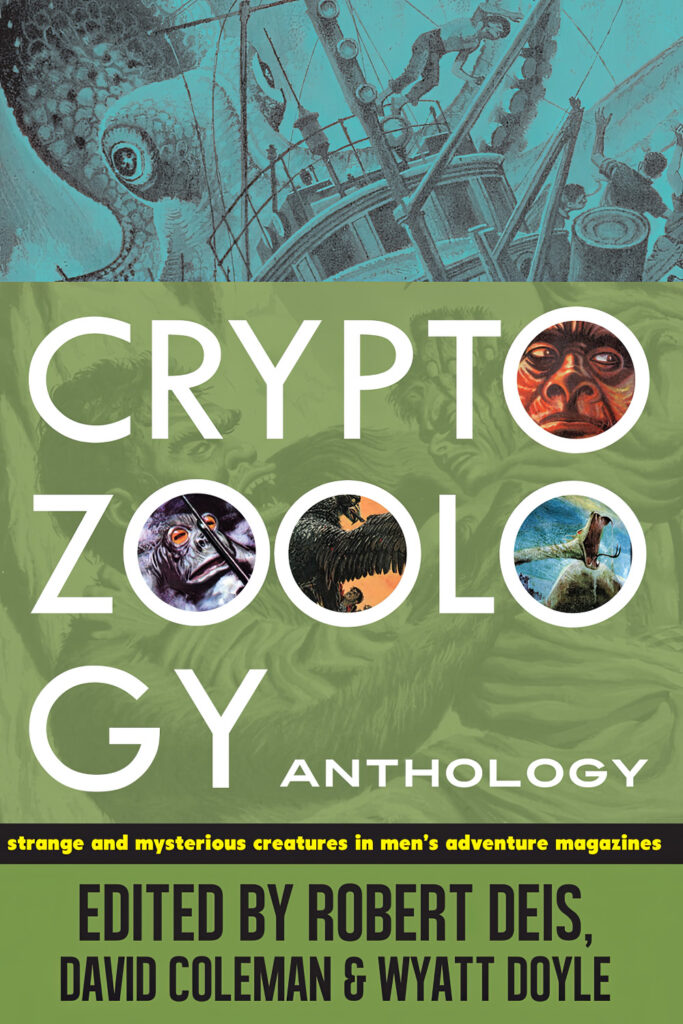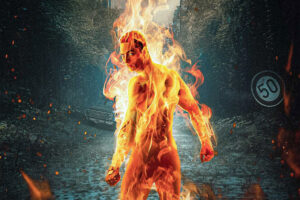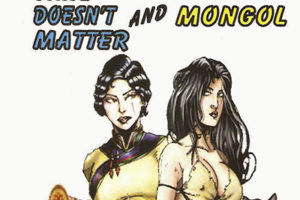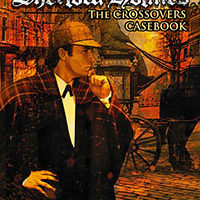 Heck, even here in South Florida, we have our own version of sasquatch, the skunk ape or swamp ape.
Heck, even here in South Florida, we have our own version of sasquatch, the skunk ape or swamp ape.
Not surprisingly, men’s adventure magazines (MAM) ran several articles and stories involving these beings. And also not surprisingly, the folks behind the Men’s Adventure Library did an anthology of these, Cryptozoology Anthology, which is available in both paperback and hardback.
I recently got a copy of the paperback edition. It’s about 280 pages with over a dozen works from a variety of MAMs.
For those not aware, men’s adventure magazines were a genre of magazines that appeared from the 1940s into the 1970s. Aimed at working-class men, they contained factual articles, fiction, and fictional stories presented as fact. They used better paper than the pulps they partially replaced, with both photos and painted artwork inside. Several of the major pulp magazines actually switched over to being MAMs, and several pulp authors and artists made the move as well.
This volume was edited by Robert Deis and Wyatt Doyle, joined by David Coleman, who is connected with the website cryptozoologymuseum.com.
Most of the articles or stories reprinted have a nice intro by Coleman, accompanied by various artwork from the MAMs. The volume starts with a long forward by Coleman, who gives a good overview of the growth of cryptozoology and how many works appeared in MAMs. I did enjoy the references to several works outside of MAMs. But I have to point out that I think more people know of the “Fouke Monster” from the Legend of Boggy Creek movie(s), like me, than the book The Beast of Boggy Creek, which isn’t even cited on the Wikipedia page for the creature. Deis and Doyle provided their own introduction as well.
One of the founders of cryptozoology is Ivan T. Sanderson. And from him, we get an article from 1948, “What-Is-Its of the Sea,” on various sea monsters spotted in different areas of the world, like British Columbia, North Carolina, and more. A similar work comes from Arthur C. Clarke, “The Reckless Ones.” Yes, that Arthur C. Clarke. This one is on the giant squid, a legendary “monster” that was later found to be real.
Several stories involved ape-men, whether you want to call them yeti, sasquatch, or what-have-you, either fictional or factual (or fiction presented as fact). “Wild Giants of British Columbia” (1948) by John W. Burns is based on various Native American legends from that area. Interestingly, the author is credited with coining the name “sasquatch” for such creatures. “I Stalked the Yeti” is presented as a factual article, with photos, of the author’s purported quest for the creatures in the Himalayas. “Incredible Monster-Man Sightings in the U.S.” by John Keel, presents evidence, with photos, of several such sightings. John Keel is a journalist probably best known for putting forth the story of the Mothman. He also coined the term “men in black” in an article for a MAM.
“Hunt for the Half-Man, Half-Ape of North America” mixes both fact and fantasy. It also mixes in a “trapped in a cabin” storyline as well. In “A Man From Another Time,” the story’s main character goes up against yeti in the Himalayas. A yeti abducts the sister of a guide who must be rescued in “I Encountered the Abominable Snowman.” “The Stone Monster” is another yeti tale, written by a female naturalist under a pseudonym. “Face to Face with the Ape-Man Monster of Tennessee” has a couple facing an ape-man, again presented as a possible true-to-life story.
We do get other creatures. “Fish With Human Hands Attacked Me!” gives us a story presented as fact of an attack by a gill-man-like creature. Like from The Creature From the Black Lagoon. “The ‘Thing’ at Dutchman’s Rig” gives us a story of a dinosaur in New Guinea. I found the artwork by George Gross interesting. The pose of the creature seems similar to a monster movie poster, just not sure which.
Dinosaurs or giant lizards in the Mato Grasso is the focus of “MacDonald’s Nightmare Safari.” Thunderbirds, the giant monsters of the Southwest, are the subject of “Monster Bird That Carries Off Human Beings,” collecting several stories of them.
Overall, this is a good collection of stories. I would have liked a few more not dealing with ape-men. Maybe a story about Nessie or some other lake monster. Or the mokele-mbembe. Regardless, I did enjoy these pieces.
Certainly, there may be enough for a second collection. Take a look at this work, as well as their magazine Men’s Adventure Quarterly.




Thanks for sharing this. Being both a pulps fan and a cryptid fan this is right up my alley.
Pity we didn’t see some of these critters get used back in the actual pulp days. Say, Doc Savage meeting the Yeti in Tibet, especially if you go with the ‘remnants of an advanced civilization’ like Hammer Studios did with that 50’s movie. Or sending De Grandin and Dr. Trowbridge off into the wilds of New Jersey to find the Jersey Devil.